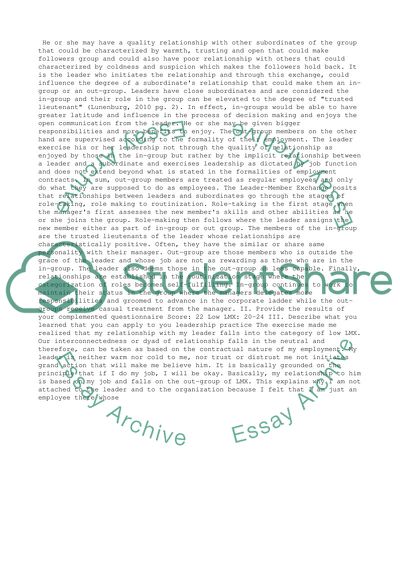LMX Theory Essay Example | Topics and Well Written Essays - 1000 words. Retrieved from https://studentshare.org/management/1498465-lmx-theory
LMX Theory Essay Example | Topics and Well Written Essays - 1000 Words. https://studentshare.org/management/1498465-lmx-theory.


